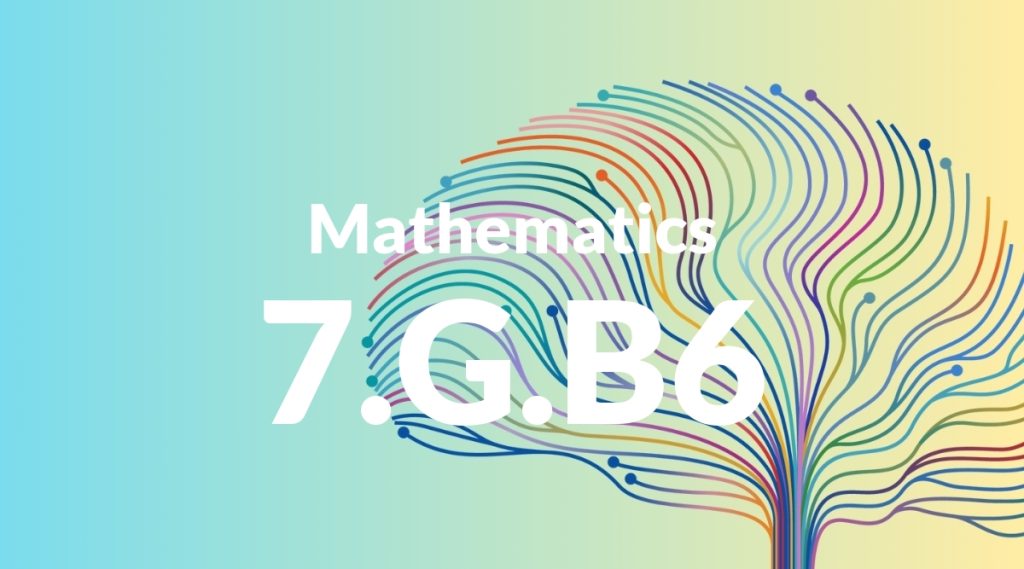Standard: 7.G.B6 – Solve real-world and mathematical problems involving area, volume and surface area of two- and three-dimensional objects composed of triangles, quadrilaterals, polygons, cubes, and right prisms.
Grade level: Grade 7
Subject: Mathematics
Domain: Geometry
Teacher Overview
This standard focuses on solving real-world and mathematical problems involving the area, volume, and surface area of various two- and three-dimensional objects. Understanding these concepts is crucial for students as it forms the foundation for more advanced geometry and practical applications in everyday life. Students should have a solid grasp of basic geometric shapes and their properties, including the ability to calculate the area of simple figures. They should also understand the basic concepts of volume and surface area for basic 3D shapes.
Mastering this standard will enable students to solve more complex geometric problems and apply these concepts in real-world contexts. It will also prepare them for advanced studies in geometry, such as working with composite shapes and irregular figures.
Common Misconception 1
A common misconception is that students often confuse the formulas for area and volume. This happens because both concepts involve measurements of space, but they are fundamentally different. Area measures the space within a two-dimensional shape, while volume measures the space within a three-dimensional object.
Intervention 1
To address this misconception, use visual aids and hands-on activities that clearly differentiate between area and volume. For example, use grid paper to calculate area and use unit cubes to calculate volume. Reinforce these concepts with multiple practice examples.
Common Misconception 2
Another common misconception is that students may incorrectly assume that surface area and volume are calculated the same way for all shapes. This can lead to errors when dealing with different geometric figures.
Intervention 2
To remediate this, provide specific examples and practice problems for different shapes. Emphasize the unique formulas and methods used for each shape, and use visual aids to illustrate the differences.
Prerequisite Knowledge
Students should have a basic understanding of geometric shapes and their properties, including the ability to calculate the area of simple shapes like triangles and rectangles. Familiarity with the concepts of volume and surface area for basic three-dimensional shapes is also important.
Subsequent Knowledge
After mastering this standard, students will be able to tackle more complex geometric problems, including those involving composite shapes and irregular figures. They will also be prepared to apply these concepts in real-world contexts, such as engineering and architecture.
Instructional Activities
- Create a 3D model using various geometric shapes and calculate its surface area and volume.
- Use graph paper to draw different polygons and calculate their area.
- Solve real-world problems involving the surface area and volume of objects like boxes, cylinders, and pyramids.
- Conduct a hands-on activity where students measure and calculate the surface area and volume of classroom objects.




